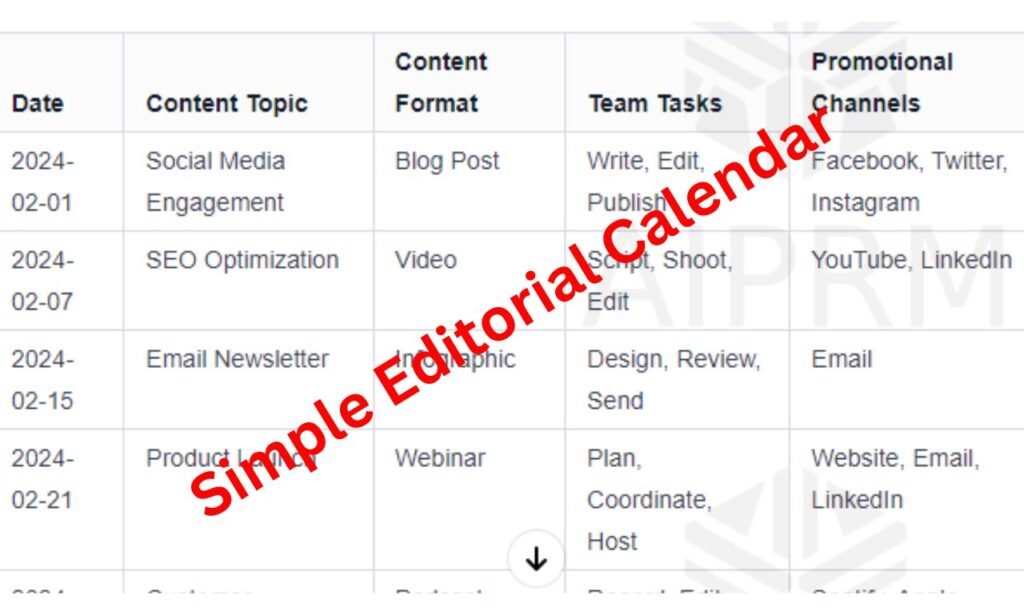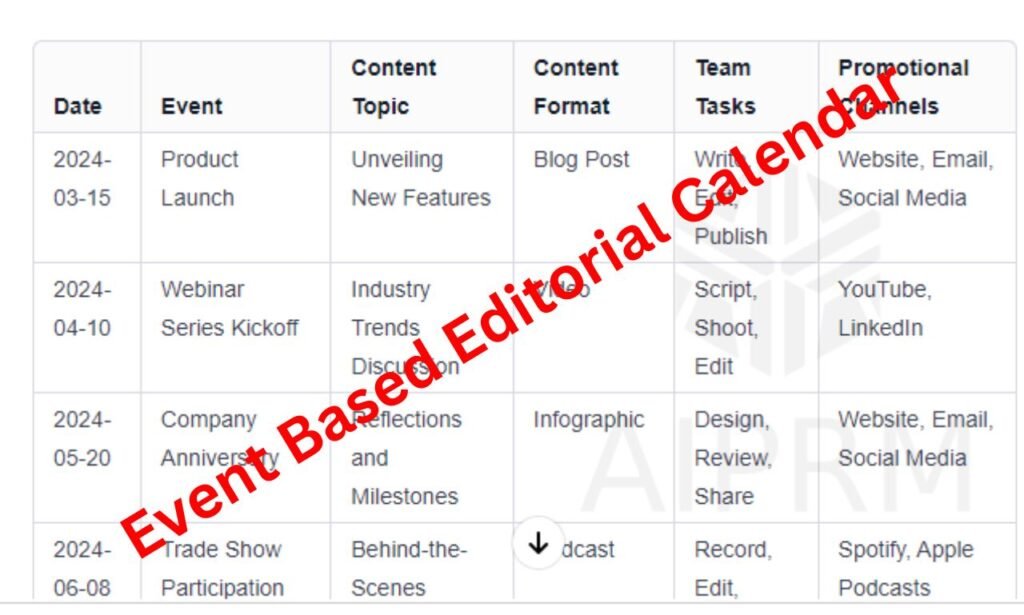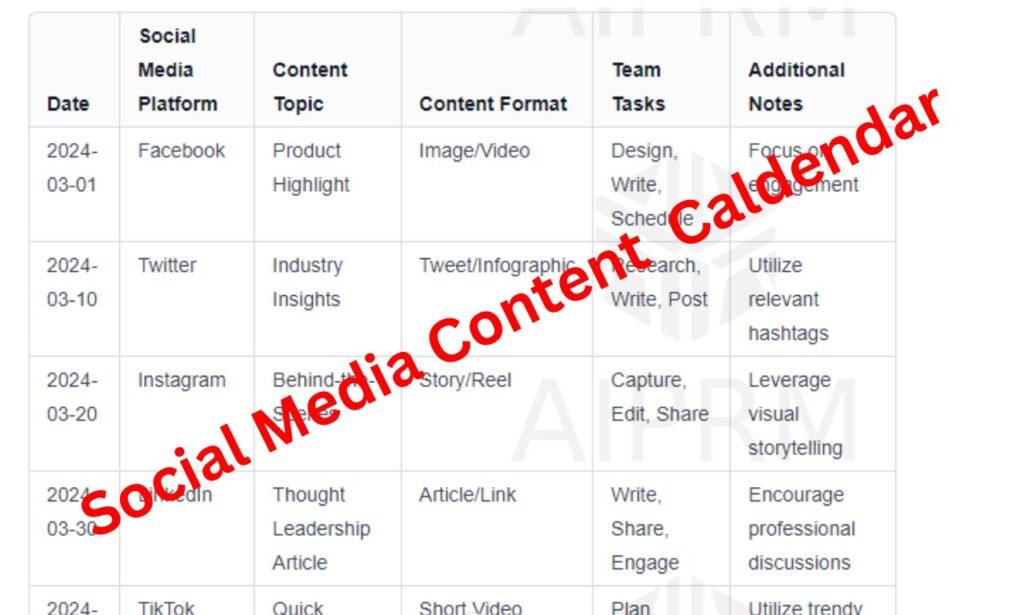In the dynamic realm of content creation, maintaining organization is pivotal for success. The editorial calendar stands out as an indispensable tool for content creators and marketers alike. More than a mere schedule.
It serves as a comprehensive roadmap, leading you through the intricate process of content creation, publication, and promotion. Join us as we explore the nuances involved in crafting a compelling and strategic editorial calendar that can elevate your content game.
Read This Too>>> How To Make Money as a Content Writer
What Does An Editorial Calendar Mean:
Before we delve into the ‘how,’ let’s grasp the ‘what.’ An editorial calendar serves as a visual depiction of your content strategy. It delineates the content you’ll craft, its publication schedule, and the platforms for promotion.
It’s not just about planning; it’s a dynamic tool ensuring alignment between creation, timing, and promotion. This strategic approach provides clarity, enhancing your ability to orchestrate a cohesive and effective content journey. Let’s explore the depth and significance of this integral aspect of content creation.
Types and Examples Of Editorial Calendar:
There are many types of content calendars but, we will explore 3 main types, i.e. simple calendar, event-based calendar, and social media content calendar. Examples of each one are below,
Simple Content Calendar:

Example of Event-Based Editorial Calendar:

Example of Social Media Content Calendar:

Why Editorial Calendar Is Important:
Improved Content Quality:
It enables meticulous planning, preventing rushed content creation. This meticulous approach ensures careful curation, resulting in higher-quality output. By adhering to a thoughtfully organized schedule, creators can invest the time and effort needed to produce content that resonates and maintains a high standard of excellence.
Innovation:
Structured planning is the catalyst for creativity, offering a canvas to experiment with diverse content types and themes. This intentional approach not only ensures organization but also stimulates innovation. It allows creators to explore new ideas, pushing the boundaries and infusing a fresh perspective into their content.
Accountability:
Collective Teamwork:
A predefined schedule fosters accountability, instilling discipline within the team. This structured approach ensures consistency in meeting deadlines. Team members, guided by a clear timeline, are more likely to adhere to commitments, promoting a collaborative and efficient work environment that contributes to the overall success of projects.
Clear Data Insights:
Delving into your calendars yields valuable insights. Analysis allows you to pinpoint patterns, recognize successful content types, and identify areas for improvement. This in-depth understanding empowers you to refine and enhance your overall content strategy, fostering continuous growth and effectiveness in reaching your audience.
Difference Between Editorial Calendar and Content Calendar:
Though often used interchangeably, there exists a subtle yet significant difference between editorial and content calendars. An editorial calendar is a comprehensive guide encompassing content creation, publication, and promotion. It serves as a strategic tool that orchestrates the entire content journey.
On the other hand, a content calendar is more focused, primarily outlining dates for publishing. While both are essential for a well-rounded content strategy, understanding their nuances ensures a more precise and effective approach to planning and executing content across various platforms.
Steps To Create An Editorial Calendar:
Research Your Target Audience And Content Goals:
Understanding your audience is paramount. Research their preferences, pain points, and expectations. Align your content goals with their needs.
Create Content Publishing Schedule:
Create a transparent publishing schedule that clearly defines the frequency of content release, be it daily, weekly, or monthly. Adhering to this schedule ensures consistency and reliability, establishing a rhythm that resonates with your audience and enhances your content strategy.
Select Your Content Topics:
Engage in brainstorming to curate a list of topics resonant with your audience and aligned with your brand identity. The diversity in content subjects is essential for maintaining freshness and engagement in your content strategy.
Define The Most Suitable Format:
Deliberate on the diverse presentation formats available, such as blog posts, videos, and infographics. Opt for formats that not only resonate with your audience but also align seamlessly with your distinctive brand voice and messaging.
Divide The Tasks In Your Team:
Delegate tasks within your team by clearly defining roles, and ensuring each member understands their responsibilities. This approach not only streamlines workflow but also fosters a collaborative environment, where everyone contributes cohesively to the team’s success.
Choose The Most Suitable Promotional Channels:
Identify the channels where your audience is most active, be it social media, email, or other platforms. Tailor your promotional strategy to these channels, ensuring targeted outreach that maximizes engagement and resonance with your specific audience demographics and preferences.
Best 3 Tools To Create Editorial Calendar:
Airtable:
Consider Airtable, an intuitive tool seamlessly blending the simplicity of a spreadsheet with the complexity of a database. This dynamic combination allows you to customize your editorial calendar effortlessly, tailoring it to your specific needs and preferences. With Airtable, enjoy a user-friendly experience that empowers you to create and manage your editorial calendar with efficiency and precision.
Monday:
Explore Monday, a versatile platform providing customizable templates and visual project management features. Tailored for teams seeking flexibility and collaboration, Monday facilitates seamless communication and coordination. Its user-friendly interface and adaptable templates make it an ideal choice for dynamic teams looking to enhance efficiency and streamline their editorial calendar creation and management process with ease.
Asana:
Renowned for its user-friendly interface, Asana proves invaluable in assisting teams to efficiently organize and track their work. With Asana, streamline the creation and management of your editorial calendar, enhancing overall productivity. This collaborative platform ensures transparent communication, enabling teams to stay on track, meet deadlines, and elevate their content creation process through a user-friendly and intuitive interface.
FAQs Calendar:
How often should I update it?
Regularly revisit and update your calendar, especially if there are changes in your content strategy or goals.
Can I use a content calendar instead of a calendar?
While they’re similar, a calendar encompasses content creation, publication, and promotion, providing a more comprehensive approach.
What’s the significance of defining content formats in the calendar?
Choosing formats beforehand ensures diverse and engaging content, catering to different audience preferences.
How can a calendar enhance team collaboration?
By clearly outlining tasks and deadlines, it fosters communication and collective responsibility within the team.
Is it necessary to stick rigidly to the editorial calendar?
Flexibility is key, but try to adhere to the schedule to maintain consistency and accountability.
Conclusion Editorial Calendar:
In the digital world of content creation, an editorial calendar functions as a guiding compass, navigating you through the intricacies of the creative process. Embracing its structured approach not only unlocks your creativity but also ensures a consistent and effective content strategy.
It acts as a roadmap, allowing you to strategically plan, produce, and promote content, ultimately leading to a cohesive and impactful online presence in the ever-evolving digital sphere.Read This Too >>> How To Build Career As A Content Writer

Great info, the use calendar will helpful in achieving your week target and celebrate your each day success.